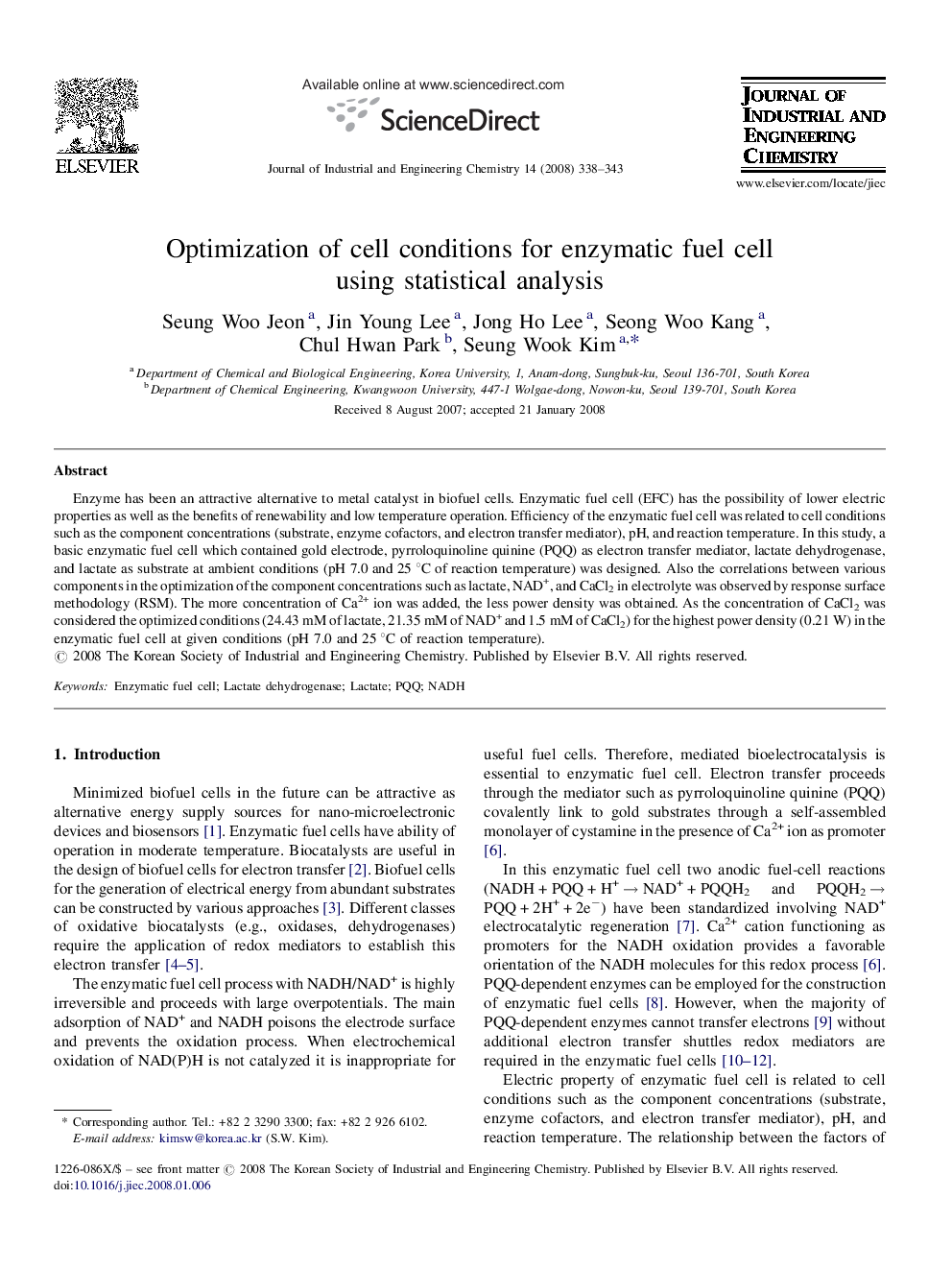| Article ID | Journal | Published Year | Pages | File Type |
|---|---|---|---|---|
| 228900 | Journal of Industrial and Engineering Chemistry | 2008 | 6 Pages |
Enzyme has been an attractive alternative to metal catalyst in biofuel cells. Enzymatic fuel cell (EFC) has the possibility of lower electric properties as well as the benefits of renewability and low temperature operation. Efficiency of the enzymatic fuel cell was related to cell conditions such as the component concentrations (substrate, enzyme cofactors, and electron transfer mediator), pH, and reaction temperature. In this study, a basic enzymatic fuel cell which contained gold electrode, pyrroloquinoline quinine (PQQ) as electron transfer mediator, lactate dehydrogenase, and lactate as substrate at ambient conditions (pH 7.0 and 25 °C of reaction temperature) was designed. Also the correlations between various components in the optimization of the component concentrations such as lactate, NAD+, and CaCl2 in electrolyte was observed by response surface methodology (RSM). The more concentration of Ca2+ ion was added, the less power density was obtained. As the concentration of CaCl2 was considered the optimized conditions (24.43 mM of lactate, 21.35 mM of NAD+ and 1.5 mM of CaCl2) for the highest power density (0.21 W) in the enzymatic fuel cell at given conditions (pH 7.0 and 25 °C of reaction temperature).
